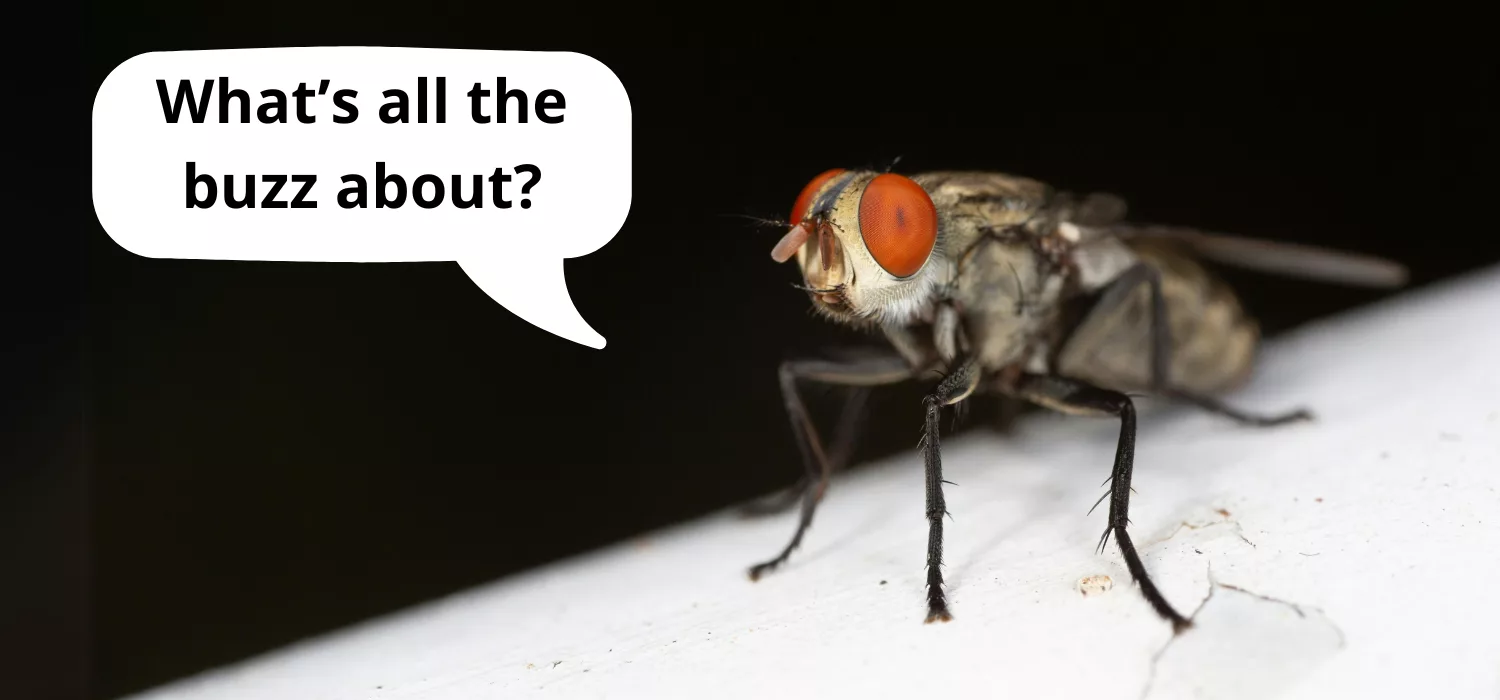As a livestock veterinarian, I’m often asked by curious meat and egg lovers, “So, what does my food eat?” You might be surprised to learn that insects could soon be on the menu.
Late last year, meat industry titan Tyson Foods announced a groundbreaking collaboration with a global insect ingredients company based in the Netherlands to venture into a new realm of protein and lipid (fat) sourcing. The news created quite a buzz, as consumers saw headlines and wondered if cricket parts would end up in their food.
Fear not.
You won’t find insect ingredients in your Tyson chicken nuggets. Instead, they could be incorporated into the feed of chickens used to make those nuggets. The partnership aims to introduce insect ingredients, specifically from black soldier flies, into animal feed, catering to aquaculture, poultry, livestock and pet food sectors (I don’t know about your furry friends, but already I catch my dog eating flies).
It’s a fascinating sustainable process. Animal byproducts like animal fats, hides and inedible proteins that might otherwise end up in landfills will be used to feed black soldier flies, which will then be turned into animal food, in a continuous, environmentally friendly cycle.
Bite-Size Bugs Offer Big Health Benefits
While it may give you the creepy crawlies, insects are a valuable source of protein, fats, vitamins and minerals – for animals and humans.
According to a study published on the National Institutes of Health Library, the protein content of insects on average is higher than plant protein sources, including cereal, soybeans and lentils, and at the upper range, insects provide more protein than even meat and eggs. This powerful nutritional profile is particularly relevant in regions where conventional protein sources aren’t readily available.
Eating insects certainly isn’t typical for folks in the U.S., Canada and Europe, but the practice dates back thousands of years and is commonplace today in places like Africa, and parts of Asia and South America. They can be served as a high-end delicacy or relied on for sustenance.
For example, in Nigeria, considered one of Africa’s poorest countries, it’s not uncommon for crickets, grasshoppers, termites and worms to be eaten raw out of necessity or turned into dishes. Locusts, which are notorious for destroying crops in Nigeria, are a popular snack – providing protein and helping save locust-sensitive crops.
There are over 2,000 edible insect species globally that are enjoyed by about two billion people and the trends is expected to increase. In fact, a 2022 report projected the edible insect market to grow to a $6 billion worldwide market by 2027, with a key driver being growing food shortages. The upward trajectory is also being driven by the animal feed market.
The Power of Protein
Just like us, animals require protein to thrive. It’s vital for life and is the major structural component of animal tissues like skin, muscles and tendons. Protein is important for the immune system and provides energy. Farmers and nutritionists make it a priority to provide balanced diets that include adequate protein and other essential vitamins and nutrients to maintain growth, health and productivity.
When it comes to providing livestock, fish and poultry with a source of high-quality protein, soy is an important staple in feed formulations worldwide – and will continue to be. But where soy can’t be grown or distributed because of factors like climate, soil conditions and geopolitical dynamics, I can see where insect protein could help ensure a more resilient and sustainable food system.
Livestock Care and Welfare
As a veterinarian, I continue to be fascinated by innovations in agriculture, particularly in livestock production. While you won’t find me with fork in hand racing to the beetle buffet, I champion innovation and am intrigued by adding insect protein to animal feed. It’s just one more way that those dedicated to providing safe, wholesome food to families around the world are focused on farm animal welfare – working to keep livestock healthy and thriving.
